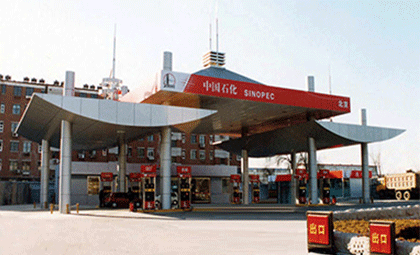
یہ پروجیکٹ ایک مربع اسپیس فریم / اونچائی 16 میٹر / کل لمبائی 30 میٹر / کل اسپین 18 میٹر ہے
1. اسٹیل اسپیس فریم کی تنصیب نچلے ڈھانچے کے محور اور سرایت شدہ بورڈ کی منظوری کے بعد کی جانی چاہیے۔نچلے سپورٹ کے لیے تقاضے ہیں: ملحقہ سپورٹ کے درمیان اونچائی کا فرق (فاصلہ L2): L2/800 اور 10mm کی چھوٹی قدر، اسی بلندی پر سب سے زیادہ اور سب سے کم سپورٹ کے درمیان اونچائی کا فرق: 20mm؛
2. سٹیل اسپیس فریم کی تنصیب کے عمل کا تعین گرڈ کی قوت اور ساختی خصوصیات اور سائٹ پر تعمیراتی حالات کے مطابق کریں۔
3. سٹیل اسپیس فریم انسٹال ہونے کے بعد، اسے چیک کیا جانا چاہیے:
aعمودی اور افقی طرف کی لمبائی کے انحراف کی قابل اجازت قدر لمبائی کا 1/2000 ہے، اور یہ 30 ملی میٹر سے زیادہ نہیں ہونی چاہیے۔
بسینٹر آفسیٹ کی قابل اجازت قیمت سٹیل اسپیس فریم کے دورانیے کا 1/3000 ہونا چاہیے، اور 30mm سے زیادہ نہیں ہونا چاہیے۔
cپرفیری کے ذریعے سپورٹ کردہ میش فریم کے لیے، قابل اجازت اونچائی کا انحراف ملحقہ سپورٹ کا 1/400 ہے، اور 15mm سے زیادہ نہیں ہونا چاہیے، اور زیادہ سے زیادہ اور کم از کم 30mm سے زیادہ نہیں ہونا چاہیے۔ایک سے زیادہ پوائنٹس سے تعاون یافتہ میش فریم کے لیے، قابل اجازت اونچائی انحراف ملحقہ سپورٹ کا 1/800 ہے، اور 30mm سے زیادہ نہیں ہونا چاہیے۔
dوضاحتیں اور ڈیزائن کی ضروریات کے مطابق گرڈ کے انحراف کا پتہ لگائیں۔تعمیر کے بعد، اسٹیل اسپیس فریم کا انحراف ڈیزائن کیلکولیشن ویلیو کے 115% سے زیادہ نہیں ہوگا۔(گرڈ فریم L/250 کی زیادہ سے زیادہ انحراف قدر)
4. اگر مقامی طور پر ویلڈنگ کی گیندیں ہیں، تو ویلڈنگ کی گیند اور چھڑی کو ویلڈنگ کرنے کے لیے نالی ویلڈنگ کا استعمال کیا جاتا ہے، اور ویلڈنگ کا سیون گریڈ دوسرے گریڈ سے کم نہیں ہونا چاہیے۔
5. اسٹیل اسپیس فریم کی تنصیب مکمل ہونے کے بعد، اسپیس فریم کے جوڑوں اور سلاخوں کی سطح صاف اور داغوں اور گندگی سے پاک ہونی چاہیے۔بولٹ بال کے جوڑوں کے جوڑوں اور اضافی سوراخوں کو چکنائی سے بھر کر بند کر دینا چاہیے۔
6. گرڈ کے استعمال کے دوران، ہر 4 سے 5 سال میں جامع اینٹی سنکنرن کی دیکھ بھال کی جانی چاہئے۔



پوسٹ ٹائم: مارچ-10-2022

